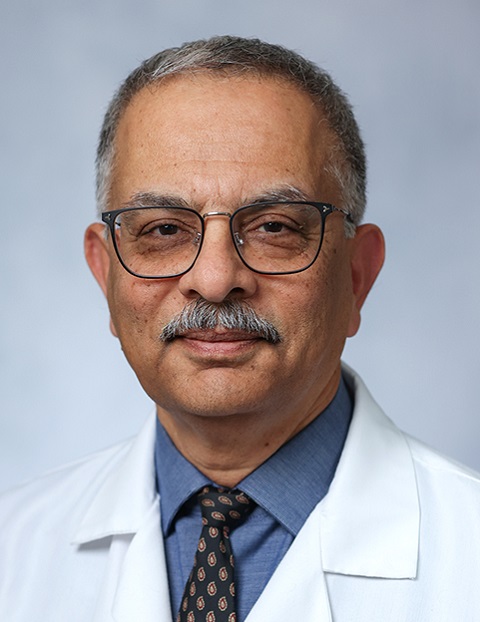
A new procedure repairs ailing hearts in teenagers and young adults, allowing them to avoid multiple open-heart surgeries.
It’s a classic “good news/bad news” scenario: Given advances in diagnosis and treatment, patients with congenital heart disease (CHD) are living longer, more active lives. But with all those extra years come additional open-heart surgeries to address problems like valve degeneration causing leaking or narrowed pulmonary valves, common among CHD patients.
Many adults with the condition may be able to avoid some of those surgeries, thanks to the development of transcatheter pulmonary valve systems, which allow interventional cardiologists to replace degenerated valves using a minimally invasive percutaneous procedure. But until now, the majority of teenagers and young adults who’d had open-heart surgery as children haven’t been able to take advantage of these systems because, over time, the surgery itself almost always leads to physical changes in the heart that make implantation very difficult.
An Alternative to Open-Heart Surgery for Teens and Young Adults

In July 2022, a team of interventional cardiologists at the Children’s Heart Center at Newark Beth Israel Medical Center (NBI) helped to usher in a new age for those young CHD patients when NBI became the first in the state of New Jersey to implant the new Edwards Sapien 3 Transcatheter Pulmonary Valve System with Alterra Adaptive Prestent—approved by the U.S. Food and Drug Administration (FDA) in late December 2021—which was designed for patients who previously were ineligible for this sort of percutaneous valve replacement, including many teenagers and young adults.
“The enhancement of this technology allows us to offer transcatheter pulmonary valves to many more patients,” says Rajiv Verma, MD, a pediatric and adult congenital heart disease specialist, interventional cardiologist and Director of the Children’s Heart Center at NBI, who performed the groundbreaking procedure. In New Jersey, the procedure is offered only at NBI.

The system comprises an artificial valve encased in metal scaffolding, connected to a delivery device that includes a small balloon. Inserted through a tiny puncture in the groin area, the device is then threaded up into the heart through the femoral vein and placed across the damaged valve. To deploy the new valve and its scaffolding, the balloon is inflated. Then, the scaffolding, along with the delivery system, is withdrawn, leaving the valve securely in place. “The system allows us to fit the valve in a way that it’s not going to move or slide up or down with every heartbeat,” says Marc Cohen, MD, Chair of Newark Beth Israel’s Department of Medicine and former Chief of Adult Cardiology. “That valve is in there as if someone had poured a layer of concrete around it.”
Because the system is so new, no one knows for sure how long the artificial valve will last until it, too, needs to be replaced, though it’s hoped that, in some patients, that interval could last a decade or longer. (Previous versions of transcatheter pulmonary valves have been utilized for 12 to 14 years with excellent results in most patients.) “The treatment can significantly reduce the number of surgeries and procedures during patients’ lifetimes and help improve their overall quality of life,” says Dr. Cohen.
Other Advantages of the Procedure
A major advantage of the procedure is that it’s minimally invasive compared to open-heart surgery—a small puncture in the groin area versus an 8- to 10-inch incision through the chest wall—and entails far less recovery time, less pain and fewer risks. To determine whether a patient qualifies for the procedure, he or she will be given a cardiac CT scan, the results of which will be sent off to Edwards, the company that produces the Alterra Adaptive Prestent system, where the scan will be used to create a three-dimensional model to check for suitability and safety. Eligibility for the procedure is based on a patient’s weight, severity of disease, size of the dysfunctional natural pulmonary valve, size of the pulmonary arteries and consultation with pediatric cardiac surgeons.
The procedure can be performed in about two hours. Patients are administered general anesthesia, not just for their comfort but also because insertion of the new valve requires that they remain entirely still. The 3D model, Dr. Verma explains, helps the cardiology team pinpoint exactly where the valve needs to be implanted. After cardiac catheterization, most patients are kept in bed for six hours or so. After that, most can get up and move around. Patients usually stay in the hospital overnight, primarily so doctors can make sure they don’t develop an irregular heartbeat, a transient side effect of the procedure. By comparison, the average length of a hospital stay after open-heart surgery is five to seven days.
After discharge, patients are asked to refrain from sports and other vigorous physical activities for a week to 10 days. They may then resume normal levels of activity, though it takes about six to 12 months, in teens and young adults, for the heart’s right ventricle to reach optimal size and function. Twelve to 18 months after the surgery, patients undergo another cardiac CT scan to determine the extent to which that’s occurred.
A decade or more later, most patients may need to have the valve replaced. The system’s greatest advantage, says Dr. Verma, is the fact that “because the valve is 29 millimeters in diameter, we can easily go in when necessary and implant a new 27-millimeter valve within that 29-millimeter valve,” once again deferring what used to be requisite open-heart surgery. That means potentially putting off surgery for 20 to nearly 30 years—a major leap forward in terms of comfort and quality of life.
Whoever your heart beats for, our hearts beat for you. To learn more about the Children’s Heart Center at Children’s Hospital of New Jersey at Newark Beth Israel Medical Center, call 973-926-3500.